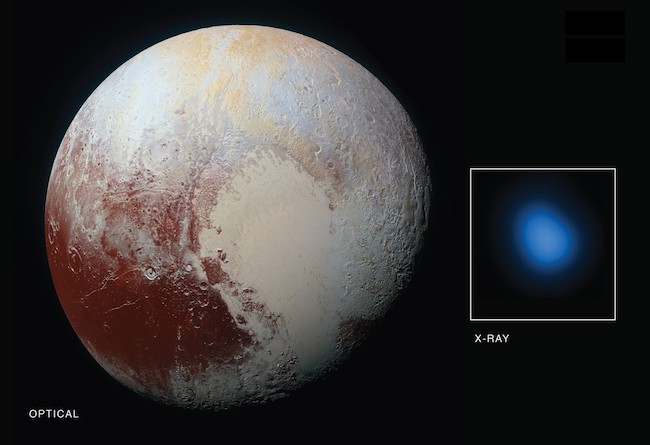Podcaster: Richard Drumm
 Title: Space Scoop: Seeing Pluto with X-ray Vision
Title: Space Scoop: Seeing Pluto with X-ray Vision
Organization:365 Days Of Astronomy
Link : astrosphere.org ; http://unawe.org/kids/unawe1621/
Description: Space scoop, news for children
Bio: Richard Drumm is President of the Charlottesville Astronomical Society and President of 3D – Drumm Digital Design, a video production company with clients such as Kodak, Xerox and GlaxoSmithKline Pharmaceuticals. He was an observer with the UVa Parallax Program at McCormick Observatory in 1981 & 1982. He has found that his greatest passion in life is public outreach astronomy and he pursues it at every opportunity.
Today’s sponsor: This episode of “365 Days of Astronomy” is sponsored by — no one. We still need sponsors for many days in 2016, so please consider sponsoring a day or two. Just click on the “Donate” button on the lower left side of this webpage, or contact us at signup@365daysofastronomy.org.
Transcript:
This is 365 Days of Astronomy. Today we bring you a new episode in our Space Scoop series. This show is produced in collaboration with Universe Awareness, a program that strives to inspire every child with our wonderful cosmos.
Today’s story is: Seeing Pluto with X-ray Vision
X-rays are a more powerful version of the normal type of light your eyes and mine can see. X-rays can travel through things that ordinary light can’t, like wood and plastic, because they have more energy.
This ability can be very useful indeed. For example, X-rays can travel through people’s skin and muscles, so doctors can see their bones underneath.
If you’ve broken one of your bones, this is the first step doctors will take! They want to see what’s going on inside you.
X-rays are also used to study cosmic objects. In hospitals, X-ray pictures show us a silhouette of our bones, but in astronomy, we photograph the object that’s creating the X-rays itself.
Today’s story isn’t about medicine, but is about the detection of X-rays coming from Pluto. PLUTO! Not some exploding star or black hole or something, but cold, distant, dwarf planet Pluto.
The low-energy X-rays were detected using NASA’s space-based Chandra X-ray Observatory. The image that Chandra sent back was just a blue blob, but what a blob!
The fact that we can see X-rays coming from Pluto is surprising. Cold, rocky worlds like Pluto have no way by themselves of creating these powerful X-rays. Scientists believe that the Sun is responsible.
The Sun doesn’t just give off heat and light, there’s also a stream of particles flowing from the it. Where these particles meet a planet’s atmosphere, X-rays are created.
But Pluto lies about 6 billion kilometers from the Sun. The Sun just looks like a bright star from out there!
At this distance there just aren’t enough particles reaching the dwarf planet to explain why its X-ray light is so bright.
We need deeper and more detailed images of the X-rays coming from Pluto to solve this mystery for sure. But one possible explanation is that a long tail of gas, like those seen on comets, could be trailing behind Pluto.
The blue blob is somewhat asymmetrical, not a perfect circle, so this might be a good hypothesis.
Also, the blue blob is over 100 times larger than Pluto, so the X-ray emission is clearly coming from something larger than the dwarf planet’s surface. It’s like it’s coming from a cloud that envelops the planet and the space near by it too.
Hey, Here’s a Cool Fact:
Pluto lies around 5 billion kilometers from Earth. It takes light about 4 hours 38 minutes to travel this distance — including that X-ray light that created the blue blob image.
But that’s 4 1/2 hours as seen from our frame of reference. To the photons of light no time has elapsed at all. Photons exist outside of time. They are created and, in this case, detected at the same time as far as they can tell. For them, no time has elapsed at all!
Talk about traveling light!
End of podcast:
365 Days of Astronomy
=====================
The 365 Days of Astronomy Podcast is produced by Astrosphere New Media. Audio post-production by Richard Drumm. Bandwidth donated by libsyn.com and wizzard media. You may reproduce and distribute this audio for non-commercial purposes. Please consider supporting the podcast with a few dollars (or Euros!). Visit us on the web at 365DaysOfAstronomy.org or email us at info@365DaysOfAstronomy.org. This year we will celebrate more discoveries and stories from the universe. Join us and share your story. Until tomorrow! Goodbye!


